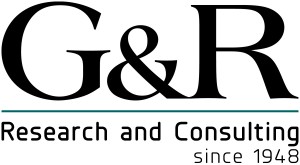Even the most data-driven company is working blindly when it comes to understanding what it gets from spending on digital advertising.
Bain & Company
Introduction
From its start in the 1940s, copy testing[1] has been industry best practice for measuring and managing the quality of advertising content, but its acceptance has not been universal: while studies have shown copy testing to be a valid predictor of sales effect[2], some advertising professionals have argued that it merely slows down the ad-development process, results in run-of-the-mill work, and kills off outstanding creative[3]. This debate has intensified with the advent of the Internet as an advertising medium and its opportunity for faster messaging deployment and real-time, behavior-oriented performance measurement. Regardless of digital’s strengths and promise, however, current evidence suggests that digital measurement (which focuses on short-term behavior) does not valuate advertising effect as well as attitudinal copy testing (which focuses on what a person thinks and feels.)
What Copy Testing Adds
1. Validity
Copy testing measures have a proven relationship to sales, while digital measures do not. Based on over 100 FMCG campaigns, a 2012 Nielsen/Facebook study found that there is no correlation between click-through-rates (CTR) on an ad and its overall market effectiveness in generating sales (ROI):
2. Memorability
Copy testing assesses the attitudinal consequences of advertising’s ability to lodge messages in people’s mind. While digital media can be effective at reaching a specific set of consumers to produce marketing traction for new or niche brands[4], less clear is how effective it is at registering messaging and increasing interest in purchasing the product for established brands. In a 2017 study for a well-established, fast-moving consumer goods company, Bain & Company compared four types of media — online banner ads, online video, TV, and storefronts — analyzing the cost for each additional 1% increase in reach and the rate at which viewers recalled the ads. They found that TV messages are recollected at a higher rate than digital — as high as 60% — and purchase intent is increased with multiple exposures to different types of media rather than digital alone.
3. Trust
Traditional advertising and copy testing measures are better trusted. Examples of digital measurement error are well-reported, as often occurs when a medium self-reports its effectiveness[5]. Additionally, the digital medium itself is less trusted. An October, 2016 study by MarketingSherpa found that the least trusted advertising channels were all digital and the most trusted ones were all traditional. Trust is important because it is the linchpin of persuasion, and the connection that enables a buyer and seller to transact business[6]. Advertising that is designed to produce short-term digital behavior without considering its attitudinal consequences neglects an important opportunity to contribute to brand strength.
4. Voice
Copy testing brings the full-throated voice of the audience to the decisionmaking table. It channels the thoughts and feelings of customers and prospects about communication consequences that are impossible for even skilled practitioners to reliably intuit[7]. And, it does this across the full target audience rather than just the clickers and likers, people who may have a propensity to take intermediate actions without becoming actual buyers[8]. By revealing a more complete picture of communications value, copy testing reduces risk and increases the probability of success.
Conclusion
Quality advertising delivers content that sets a brand apart in ways that people value. Copy testing provides a more complete assessment of this than digital. Its measures are better validated, cover both long- and short-term effect, are more trusted, and portray a wider spectrum of communication performance dimensions across a fuller viewing audience. Copy testing is not a panacea for the substantial challenges that many big brands currently face[9], but it is the best current way to assess how advertising content shapes the values and beliefs that build enduring brands.
Footnotes
[1] Copy testing uses survey research techniques to assess content effectiveness against other ad options and established benchmarks. The typical design is to expose an ad to a sample of people and obtain a set of standardized and custom measures that vary based on research company.
[2] Russell Haley, Allan Baldinger. “The ARF Copy Research Validity Project”, Journal of Advertising Research vol 40, issue 6 (2000): 114-135. doi: 10.2501/JAR-40-6-114-135. http://www.journalofadvertisingresearch.com/content/40/6/114.
[3] Adler, Lee, Allan Greenberg, and Darrell B. Lucas. “What Big Agency Men Think of Copy Testing Methods.” Journal of Marketing Research 2, no. 4 (1965): 339-45. doi:10.2307/3149480. http://www.jstor.org/stable/3149480
[4] For example, mattress startup, Casper: https://www.marketwatch.com/story/mattress-startup-casper-relies-on-social-media-word-of-mouth-2015-02-18
[5] “Will the Digital Advertising Star Dim: The Long and Short of Brand Advertising” https://www.gandrllc.com/on-our-minds/digital-brand-advertising/
[6] The key to persuasion is that it not be manipulative. In order for messaging to be effective, enduring and even ethical, those who are influenced need to feel personally committed to the change and to their relationship with the change agent. (See Robert Cialdini).
[7] For every untested blockbuster commercial like Apple’s 1984, Honda’s Hands and Pepsi’s Uncle Drew, there is a commercial like Apple’s Lemmings, Honda’s Mr. Opportunity, and Pepsi’s Protester (Kendall Jenner).
[8] With average click through rates for an online ad being .01-2%, that means that at least 98% of an ad’s response goes unreported with even the best online measurement tools.
[9] From 2011 to 2016, large consumer goods brands lost market share to small competitors for the first time in 50 years. (See Jim Brennan.)





Comments are closed.